Nightmare (1964)
Directed by: Freddie Francis
Written by: Jimmy Sangster
Starring: Brenda Bruce, David Knight, Jennie Linden, Moira Redmond
UK
AVAILABLE ON DVD
RUNNING TIME: 83 min
REVIEWED BY: Dr Lenera, Official HCF Critic
Young Janet’s mother was committed to an asylum when the child was just 14 after stabbing her husband to death. This preys on Janet’s mind and she’s convinced that she may have inherited a streak of madness when she becomes the victim of recurring nightmares. She’s taken from finishing school by the headmistress to her country home to be looked after by her guardian Henry Baxter and a nurse, Grace Maddox, but she begins to have visions of an unknown woman with a scar and a birthday cake, and feels even more insecure when Baxter brings home his wife….who is the spitting image of the woman in Janet’s hallucinations [or are they?]….
While Maniac, the third in the cycle of the Hammer Jimmy Sangster-scripted psycho thrillers [or fourth if you count Stop Me Before I Kill, which I guess you should really], wasn’t really a horror film at all and therefore only merited a short review from me, Nightmare is most definitely a chiller and might be the best of these films so far. The plot is the usual twisty Les Diaboliques-inspired thing, but unlike certain elements in the earlier films especially Taste Of Fear [which still seems to be regarded as the greatest of the films but I don’t why as its story really falls apart when you think about it], it’s quite airtight and makes reasonable sense if you decide to ponder upon it [yes, some details are missing, but the viewer can easily fill in the blanks], while the film is also genuinely unsettling in places, with an intensity to parts that I think even many modern horror fans should appreciate, which makes me surprised that this effort doesn’t seem to be very well known. I guess it could partially be because these particular films tend to be considered more as thrillers than horrors, despite the fact that they contain moments that are actually more frightening than you find in most of the Dracula or Frankenstein pictures. While with many older films I have to get myself into a particular frame of mind to get scared, I soon found that this one was working me up quite nicely.
Whether appreciated much today or not, these films, which due partly to the black and white filming were even cheaper than the traditional Hammer Gothics, usually made money, so Sangster had no trouble getting Hammer to film his next devious, if by now quite formulaic, mystery suspense script, which was shot under the silly title of Here’s The Knife Dear, Now Use It, before some saner heads requested that Sangster change it. The director was Freddie Francis, who hadn’t long made Paranoiac, and who begun his fruitful collaboration with cinematographer John Wilcox with this film. Julie Christie, perhaps unbelievably, was originally cast in the lead role, but pleaded with Hammer to let her go so she could film Billy Liar, which catapulted her to stardom, so model Jennie Linden was a last minute replacement. I’m not sure that Christie would, in the end, have been as good. Shot at, as usual, Bray Studios and, very briefly, around nearby Oakley Court in Windsor which had already appeared in some Hammer films and would subsequently turn up in a few more, Nightmare got a prompt release in both the UK and the US through Universal, going out on a commercially successful double bill with The Evil Of Frankenstein, though I reckon that that film would have been totally overshadowed by Nightmare, which played second, for most audiences.
The opening sequence, though played partially under the credits, is amazingly strong with its extremely dark mood, as we follow a girl in white, who seems to literally come out from the darkness, down a secluded hallway. Though scared, she’s inexorably drawn towards a room, which is now obviously a cell in an asylum. A woman [her mother!] is standing facing a corner and slowly turns to her and the viewer, laughing maniacally and uttering a truly bloodcurdling scream….before Janet wakes up. Though even more unsettling to me was the hideous doll she carries about, which turns up later in the film too. For some reason , it’s decided that Janet is best looked after at home, despite clearly being seriously disturbed, and we are only briefly introduced to the other inhabitants of the house, where I immediately suspected that one particular person was going to be up to now good and was, rather disappointingly, later proved right. The reason for Janet’s possible madness is revealed to us in a nicely done flashback where the camera tracks away from the narrator and into the darkened lounge which suddenly becomes full of light. The 14 year old girl seeing her mother stab her father to death is quite upsetting, but this is then followed by two extremely good nightmare scenes [or are they?], with lots of creepy wondering down dark corridors and extra layers of creepiness provided by a dead body being obviously a model but somehow providing more unease because of this rather than inspite of it, and the scarred ghost….or not….being played by the same person, Clytie Jessop, who essayed a similar part in The Innocents [for me the best ghost movie ever].
Now I’m not going to give away the whole story, but the film seems to reach a peak when, in a moment which really shocked me, Janet stabs to death Baxter’s wife who looks just like the apparition that seems to haunt her at night. After this, the story changes its point of view as Janet is carted off to the asylum and the main character is now Grace the nurse, who begins to suspect that her own husband is trying to drive her insane, or at the least has some secrets. While Sangster liked to employ this device often, it was usually more towards the end of a film, and it’s slightly jolting here, especially when the film could have done with letting this second section breath a bit more and start off slower, while the film’s edge diminishes when, for a while, we seem to be just following a bickering married couple. Grace’s switch from calmness to despair isn’t convincingly done too, while we also have to put up more of David Knight’s stolid performance [just imagine how good Oliver Reed would have been in this part!]. There’s still some eerie moments though, with Francis getting great mileage out of simple things like a door handle being slowly turned from the outside. The final twist is a little rushed but does seem plausible when you think about it. it’s just a shame that Janet virtually disappears from the final three fifths of the film, though of course the tale that Sangster has concocted wouldn’t work as well.
Though of course Francis, also being a cinematographer as well as a director, obviously had much input, Wilcox’s black and white cinematography can’t really be praised highly enough, really contributing to much of the mood of the picture, ,especially with the amount of black used. He’s not afraid to almost remove all light altogether, or have a room covered in darkness except for a door which is bathed in light from no discernable source but which looks great anyway. Also expertly done is when Janet, who already sees the resemblance to the woman of her nightmares, first sees Baxter’s wife from behind, somewhat blurry and indistinct. Taste Of Fear and Paranoiac both looked great but Nightmare looks even better, and really shows how great Bernard Robinson’s usually lush, but slightly sparser here, sets show up in monochrome. The chief issue with the film is that there’s a slight mechanical quality to the narrative, though this can’t really be helped and is an unavoidable trademark of these Sangster-scripted thrillers.
For the most part, the performances do rise to the occasion. Linden, in her first acting role, is phenomenal, her slight uneasiness onscreen actually adding to the character’s feelings of paranoia, uncertainty, and fear. Moira Redmond pretty much takes over her role later on and does almost as well as Linden. Don Banks’ tremendous score may be his best effort for Hammer, with a palpable feeling of psychological torment running all the way through it, especially with the rather unsettling way he often uses the strings in the higher registers. Like James Bernard, he likes to employ several simple, very short themes which are threaded throughout the film, though at times the music has an intensity which even Bernard would have found hard to match. He also leaves some of the scary parts unscored which works well for those particular scenes. I should also mention that there’s a hell of a lot of screaming in this one. Occasionally genuinely surprising, full of suspense and sometimes actually a little frightening, Nightmare is a unfairly neglected effort form Hammer and really works very well. Francis would say that he never really liked horror films, and it’s possible that he always preferred being a cinematographer, but this, The Skull and The Creeping Flesh, at least, certainly show that, if he engaged fully with the material, he did have a knack for the genre.
rating: 8/10]

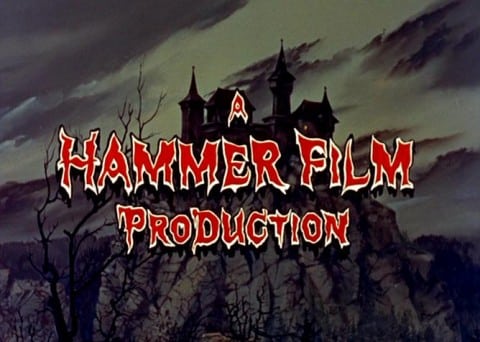

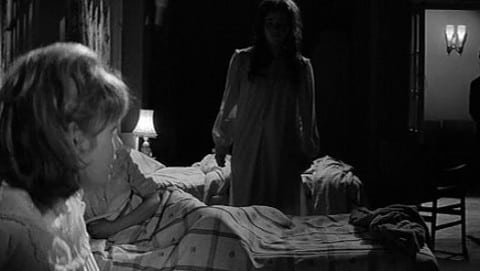
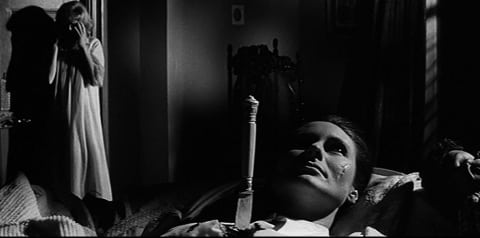

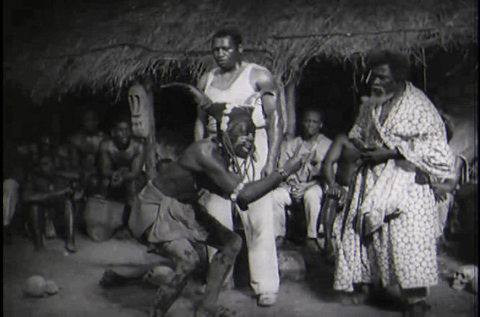
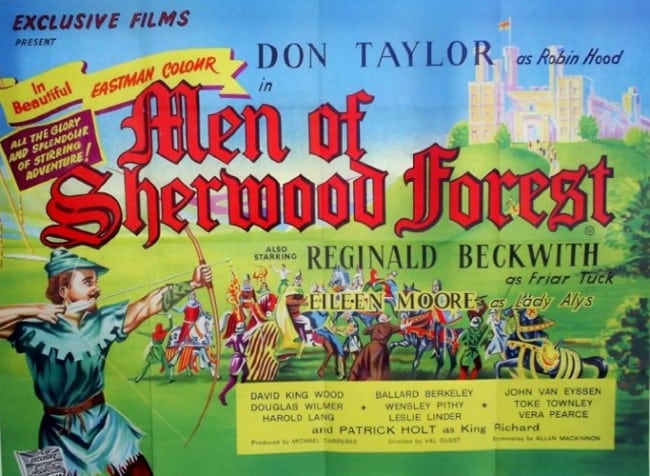
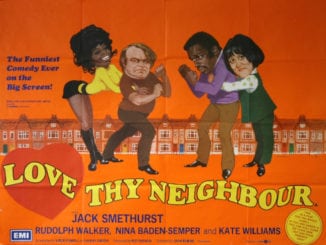
I have just purchased this on Blu-ray after reading your informative review. Thank you.